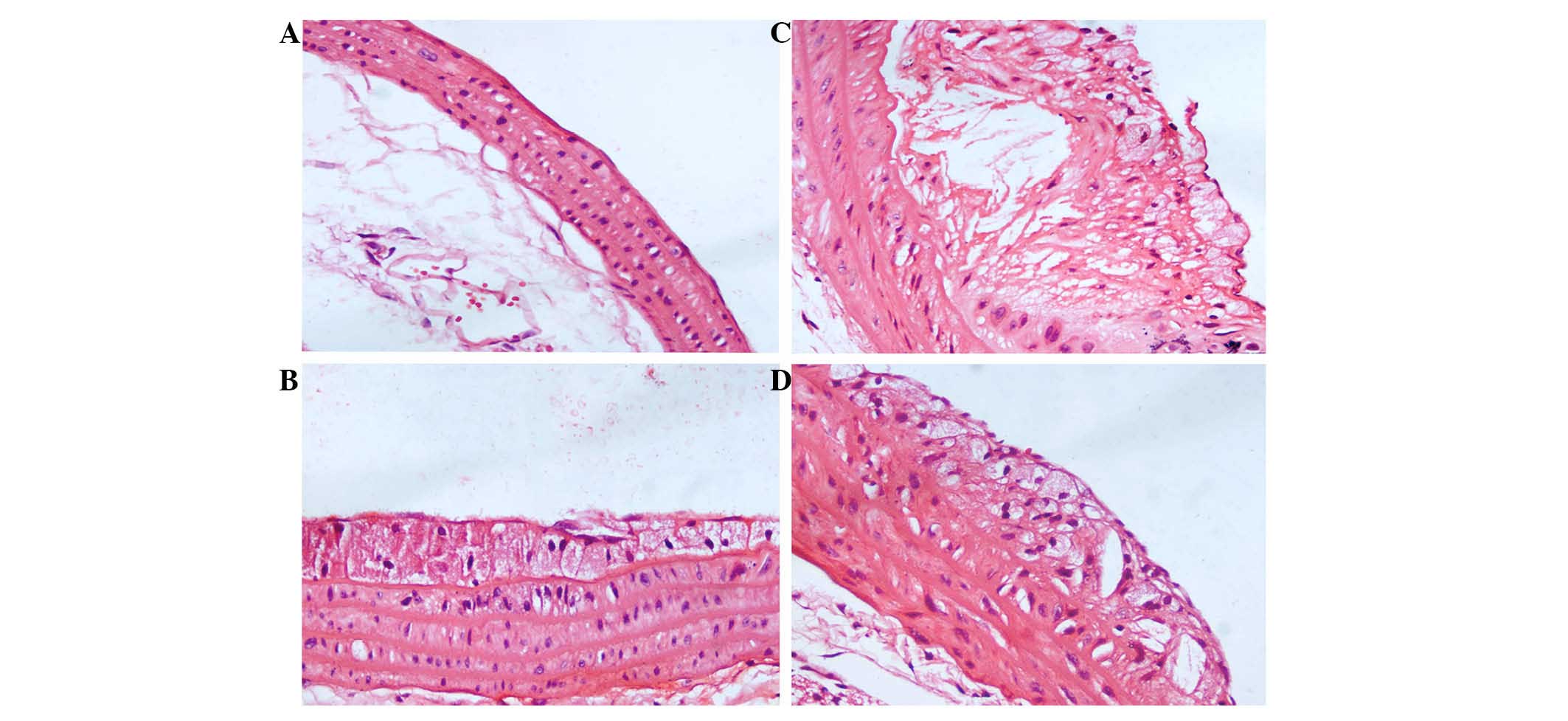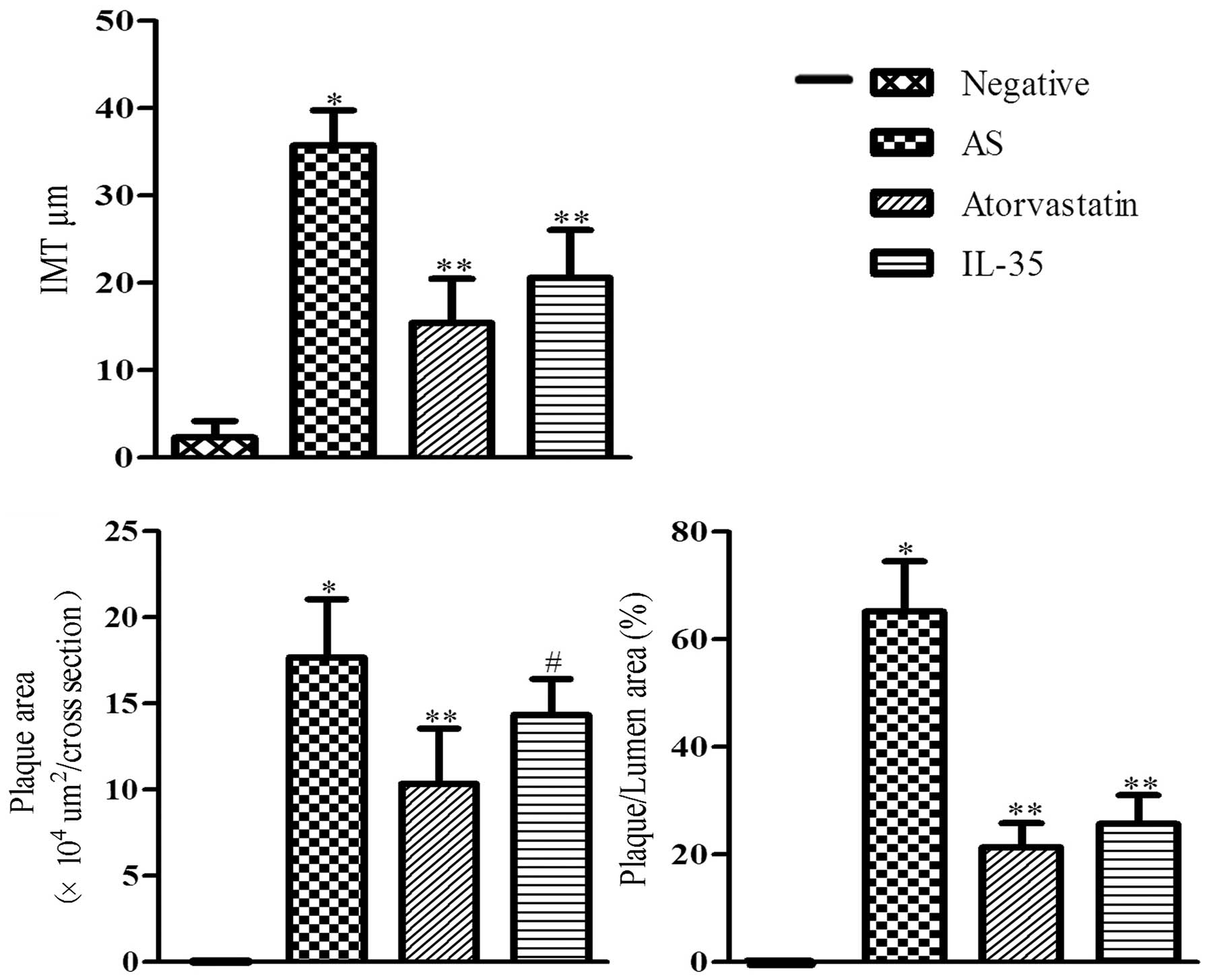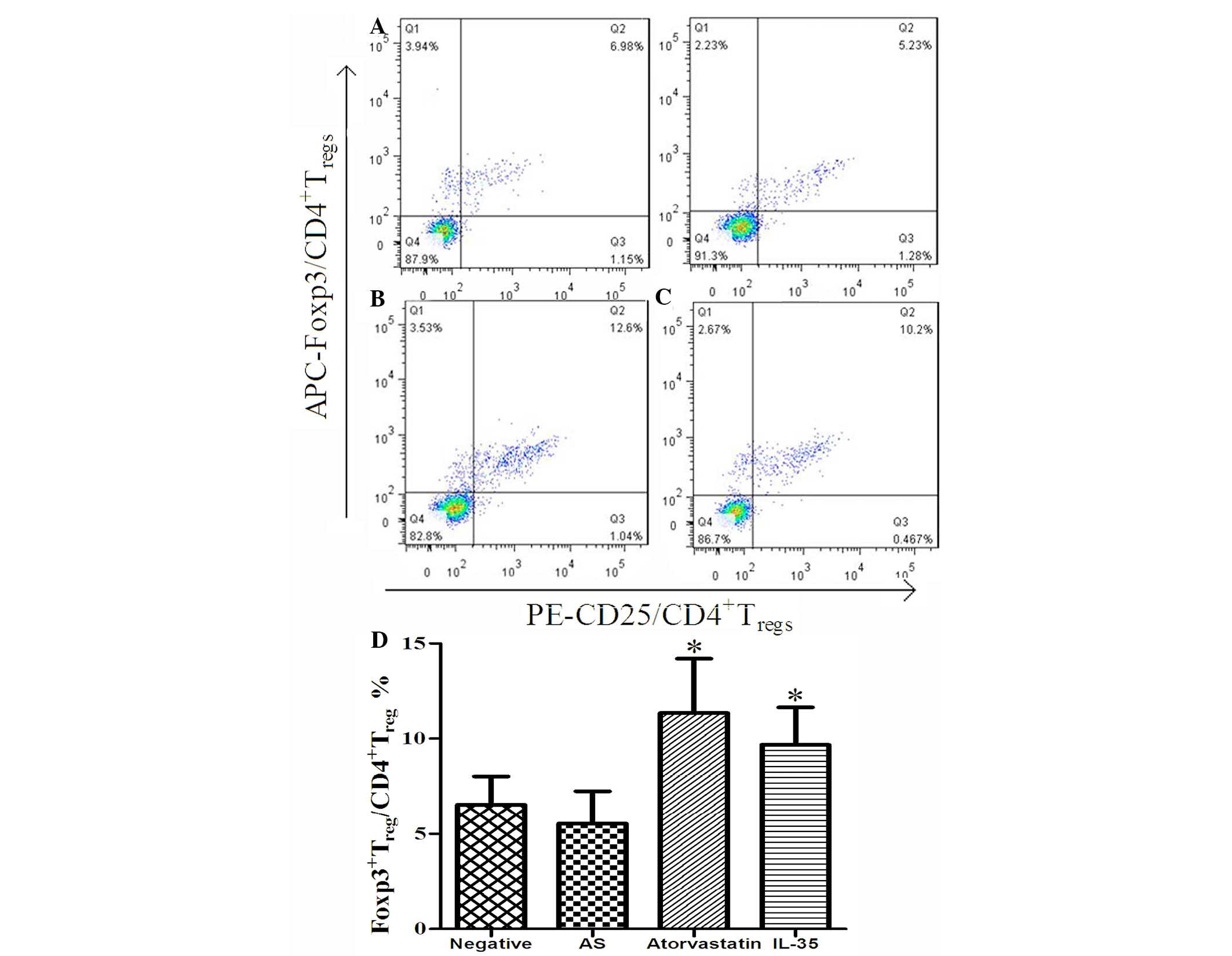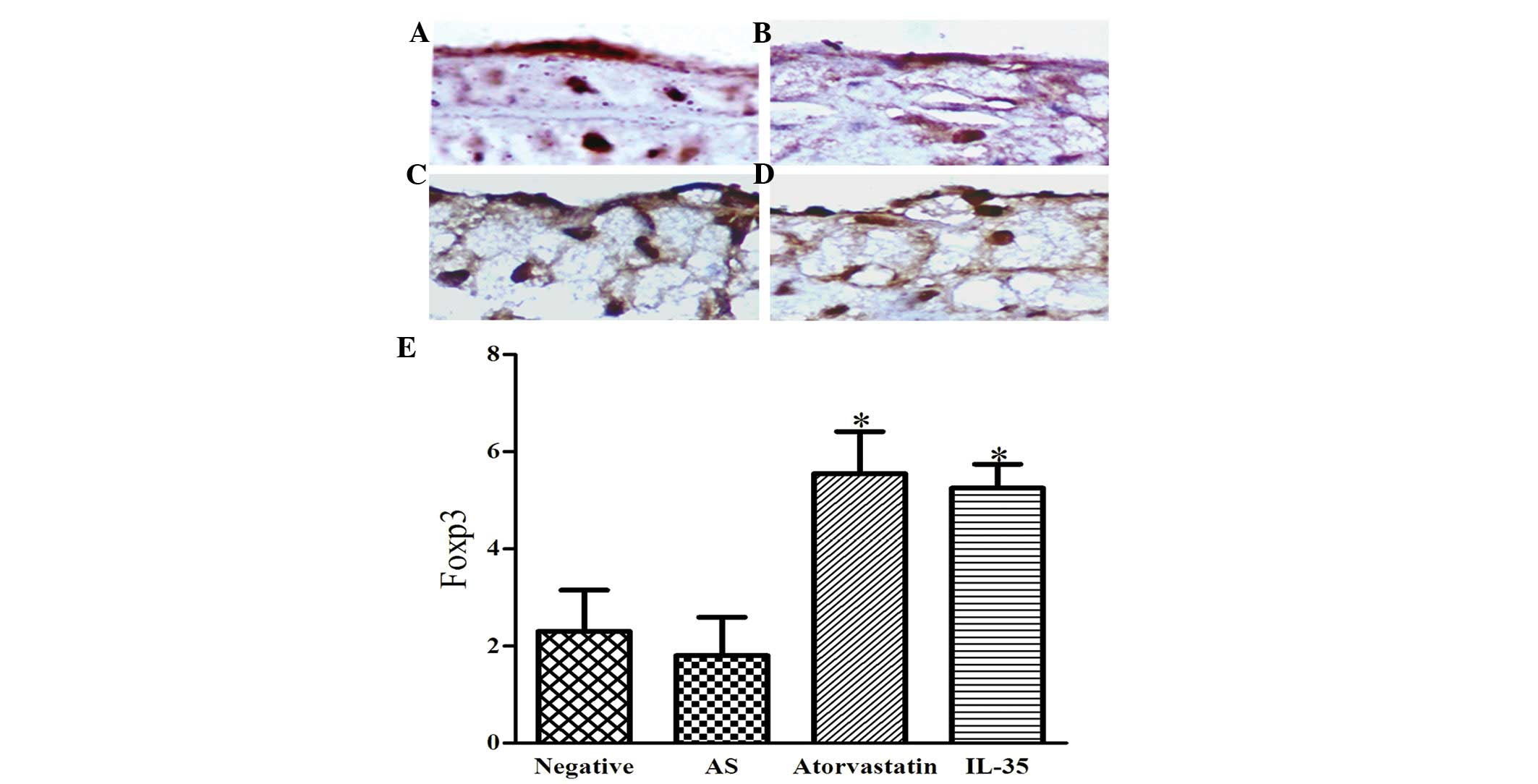|
1
|
Ross R: The pathogenesis of
atherosclerosis: A perspective for the 1990s. Nature. 362:801–809.
1993. View
Article : Google Scholar : PubMed/NCBI
|
|
2
|
Samson S, Mundkur L and Kakkar VV: Immune
response to lipoproteins in atherosclerosis. Cholesterol.
2012:5718462012. View Article : Google Scholar : PubMed/NCBI
|
|
3
|
Hansson GK: Inflammation, atherosclerosis
and coronary artery disease. N Engl J Med. 352:1685–1695. 2005.
View Article : Google Scholar : PubMed/NCBI
|
|
4
|
Libby P: Inflammation in atherosclerosis.
Arterioscler Thromb Vasc Biol. 32:2045–2051. 2012. View Article : Google Scholar : PubMed/NCBI
|
|
5
|
Chistiakov DA, Sobenin IA and Orekhov AN:
Regulatory T cells in atherosclerosis and strategies to induce the
endogenous atheroprotective immune response. Immunol Lett.
151:10–22. 2013. View Article : Google Scholar : PubMed/NCBI
|
|
6
|
Nik Tavakoli N, Hambly BD, Sullivan DR and
Bao S: Forkhead box protein 3: Essential immune regulatory role.
Int J Biochem Cell Biol. 40:2369–2373. 2008. View Article : Google Scholar : PubMed/NCBI
|
|
7
|
Brunkow ME, Jeffery EW, Hjerrild KA,
Paeper B, Clark LB, Yasayko SA, Wilkinson JE, Galas D, Ziegler SF
and Ramsdell F: Disruption of a new forkhead/winged-helix protein,
scurfin, results in the fatal lymphoproliferative disorder of the
scurfy mouse. Nat Genet. 27:68–73. 2001. View Article : Google Scholar : PubMed/NCBI
|
|
8
|
Bacchetta R, Passerini L, Gambineri E, Dai
M, Allan SE, Perroni L, Dagna-Bricarelli F, Sartirana C,
Matthes-Martin S, Lawitschka A, et al: Defective regulatory and
effector T cell functions in patients with FOXP3 mutations. J Clin
Invest. 116:1713–1722. 2006. View
Article : Google Scholar : PubMed/NCBI
|
|
9
|
Horis S, Momura T and Sakaguchi S: Control
of regulatory T cell development by the transcription factor Foxp3.
Science. 299:1507–1061. 2003.
|
|
10
|
Collison LW, Pillai MR, Chaturvedi V and
Vignali DA: Regulatory T cell suppression is potentiated by target
T cells in a cell contact, IL-35-and IL-10-dependent manner. J
Immunol. 182:6121–6128. 2009. View Article : Google Scholar : PubMed/NCBI
|
|
11
|
Collison LW and Vignali DA:
Interleukin-35: Odd one out or part of the family? Immunol Rev.
226:248–262. 2008. View Article : Google Scholar : PubMed/NCBI
|
|
12
|
Wirtz S, Billmeier U, Mchedlidze T,
Blumberg RS and Neurath MF: Interleukin-35 mediates mucosal immune
responses that protect against T-cell-dependent colitis.
Gastroenterology. 141:1875–1886. 2011. View Article : Google Scholar : PubMed/NCBI
|
|
13
|
Collison LW, Workman CJ, Kuo TT, Boyd K,
Wang Y, Vignali KM, Cross R, Sehy D, Blumberg RS and Vignali DA:
The inhibitory cytokine IL-35 contributes to regulatory T-cell
function. Nature. 450:566–569. 2007. View Article : Google Scholar : PubMed/NCBI
|
|
14
|
Niedbala W, Wei XQ, Cai B, Hueber AJ,
Leung BP, McInnes IB and Liew FY: IL-35 is a novel cytokine with
therapeutic effects against collagen-induced arthritis through the
expansion of regulatory T cells and suppression of Th17 cells. Eur
J Immunol. 37:3021–3029. 2007. View Article : Google Scholar : PubMed/NCBI
|
|
15
|
Kempe S, Heinz P, Kokai E, Devergne O,
Marx N and Wirth T: Epstein-barr virus-induced gene-3 is expressed
in human atheroma plaques. Am J Pathol. 175:440–447. 2009.
View Article : Google Scholar : PubMed/NCBI
|
|
16
|
Huang Y, Lin YZ, Shi Y and Ji QW: IL-35: A
potential target for the treatment of atherosclerosis. Pharmazie.
68:793–795. 2013.PubMed/NCBI
|
|
17
|
Lin Y, Huang Y, Lu Z, Luo C, Shi Y, Zeng
Q, Cao Y, Liu L, Wang X and Ji Q: Decreased plasma IL-35 levels are
related to the left ventricular ejection fraction in coronary
artery diseases. PLoS One. 7:e524902012. View Article : Google Scholar : PubMed/NCBI
|
|
18
|
Rudensky AY: Regulatory T cells and Foxp3.
Immunol Rev. 241:260–268. 2011. View Article : Google Scholar : PubMed/NCBI
|
|
19
|
Li H, Dai M and Jia W: Paeonol attenuates
high-fatdiet-induced atherosclerosis in rabbits by
anti-inflammatory activity. Planta Med. 75:7–11. 2009. View Article : Google Scholar : PubMed/NCBI
|
|
20
|
Park K, Lee DG, Kim SW and Paick JS:
Dimethylarginine dimethylaminohydrolase in rat penile tissue:
Reduced enzyme activity is responsible for erectile dysfunction in
a rat model of atherosclerosis. Int J Impot Res. 21:228–234. 2009.
View Article : Google Scholar : PubMed/NCBI
|
|
21
|
Collison LW, Chaturvedi V, Henderson AL,
Giacomin PR, Guy C, Bankoti J, Finkelstein D, Forbes K, Workman CJ,
Brown SA, et al: IL-35-mediated induction of a potent regulatory T
cell population. Nat Immunol. 11:1093–1101. 2010. View Article : Google Scholar : PubMed/NCBI
|
|
22
|
Wang B, Dai S, Dong Z, Sun Y, Song X, Guo
C, Zhu F, Wang Q and Zhang L: The modulation of endoplasmic
reticulum stress by chemical chaperone upregulates immune negative
cytokine IL-35 in apolipoprotein E-deficient mice. PLoS One.
9:e877872014. View Article : Google Scholar : PubMed/NCBI
|
|
23
|
Kempe S, Heinz P, Kokai E, Devergne O,
Marx N and Wirth T: Epstein-barr virus-induced gene-3 is expressed
in human atheroma plaques. Am J Pathol. 175:440–447. 2009.
View Article : Google Scholar : PubMed/NCBI
|
|
24
|
Fredman G and Spite M: Recent advances in
the role of immunity in atherosclerosis. Circ Res. 113:e111–e114.
2013. View Article : Google Scholar : PubMed/NCBI
|
|
25
|
Profumo E, Buttari B, Saso L and Rigano R:
Pleiotropic effects of statins in atherosclerotic disease: Focus on
the antioxidant activity of atorvastatin. Curr Top Med Chem.
14:2542–2551. 2014. View Article : Google Scholar : PubMed/NCBI
|
|
26
|
Tao Q, Pan Y, Wang Y, Wang H, Xiong S, Li
Q, Wang J, Tao L, Wang Z, Wu F, et al: Regulatory T cells-derived
IL-35 promotes the growth of adult acute myeloid leukemia blasts.
Int J Cancer. 137:2384–2393. 2015. View Article : Google Scholar : PubMed/NCBI
|
|
27
|
Li X, Mai J, Virtue A, Yin Y, Gong R, Sha
X, Gutchigian S, Frisch A, Hodge I, Jiang X, et al: IL-35 is a
novel responsive anti-inflammatory cytokine-a new system of
categorizing anti-inflammatory cytokines. PloS One. 7:e336282012.
View Article : Google Scholar : PubMed/NCBI
|
|
28
|
Collison LW, Chaturvedi V, Henderson AL,
Giacomin PR, Guy C, Bankoti J, Finkelstein D, Forbes K, Workman CJ,
Brown SA, et al: IL-35-mediated induction of a potent regulatory T
cell population. Nat Immunol. 11:1093–1101. 2010. View Article : Google Scholar : PubMed/NCBI
|
|
29
|
Seyerl M, Kirchberger S, Majdic O, Seipelt
J, Jindra C, Schrauf C and Stöckl J: Human rhinoviruses induce
IL-35-producing Treg via induction of B7-H1 (CD274) and
sialoadhesin (CD169) on DC. Eur J Immunol. 40:321–329. 2010.
View Article : Google Scholar : PubMed/NCBI
|
|
30
|
Thompson PD, Clarkson PM and Rosenson RS:
National Lipid Association Statin Safety Task Force Muscle Safety
Expert Panel: An assessment of statin safety by muscle experts. Am
J Cardiol. 97:69C–76C. 2006. View Article : Google Scholar : PubMed/NCBI
|
|
31
|
Vural K and Tuğlu MI: Neurotoxic effect of
statins on mouse neuroblastoma NB2a cell line. Eur Rev Med
Pharmacol. 15:985–991. 2011.
|














